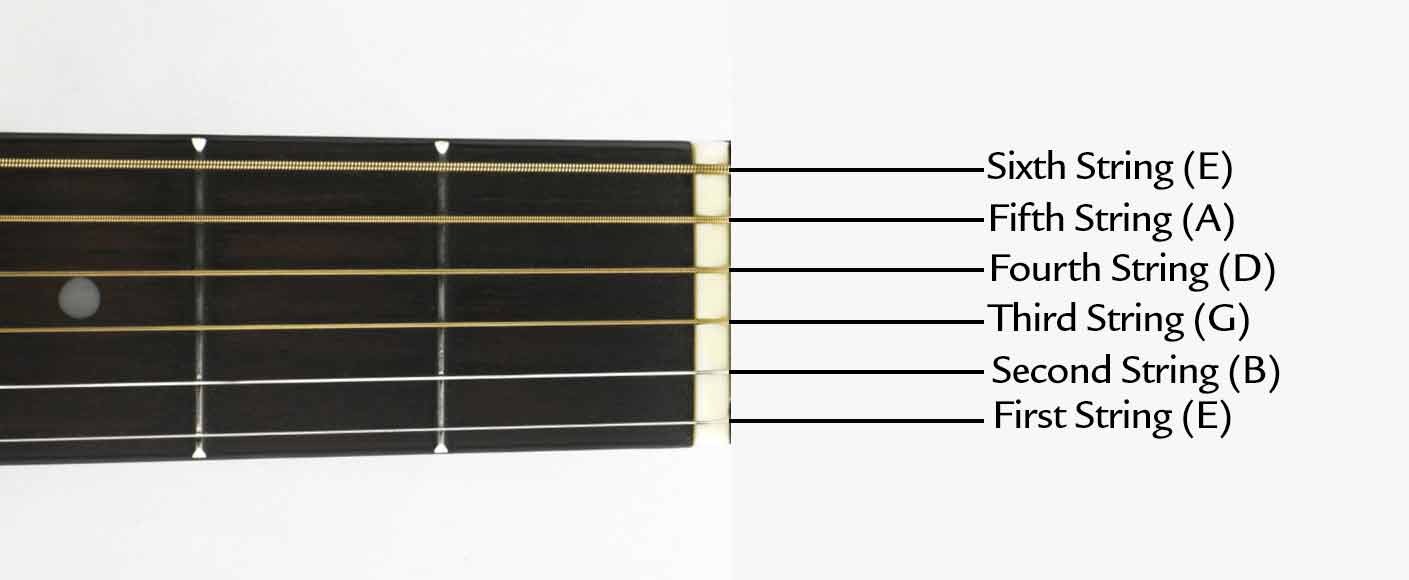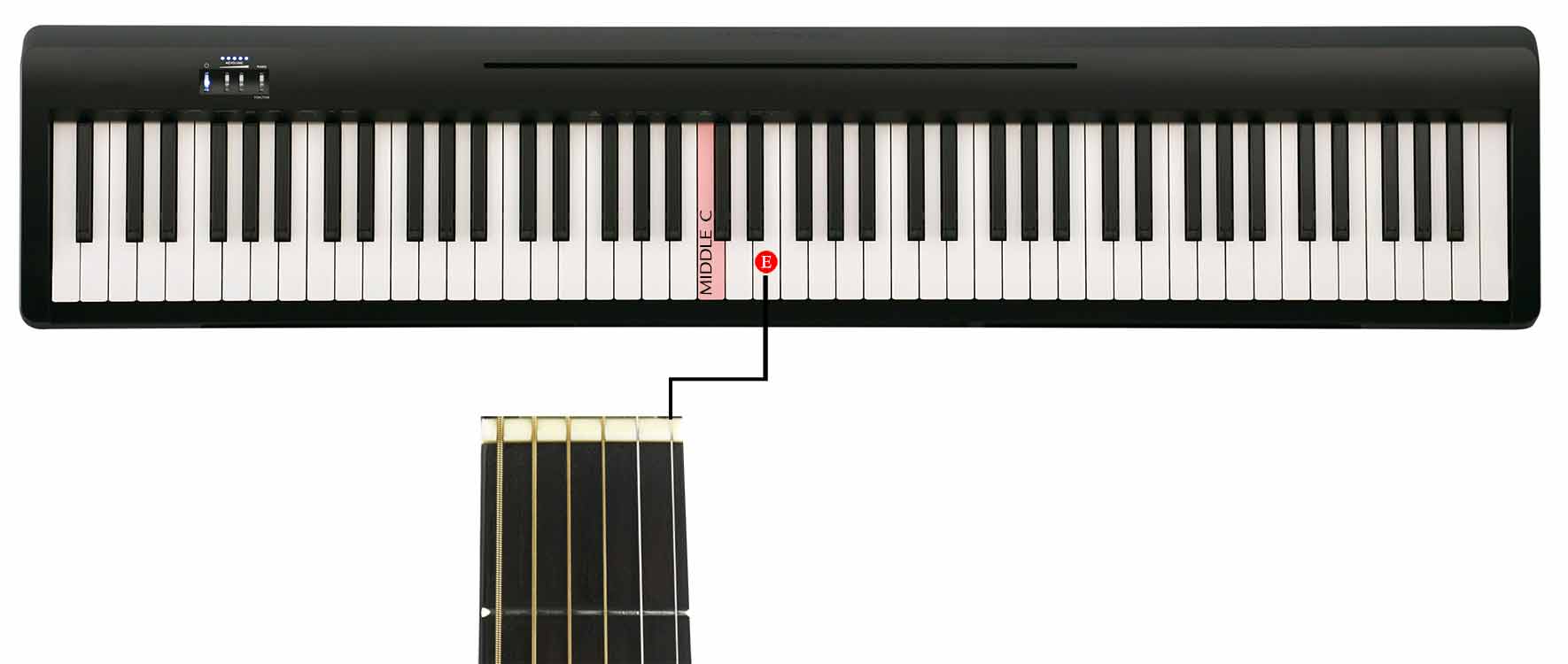2) Play the E note (the white key 2 places higher after your Middle C) and tune your guitar’s 1st string to match this note (Refer the picture above)
3) Play the B note (the white key immediately to the left of your Middle C) and tune your guitar’s 2nd string to match this note (Refer the picture above)
4) Play the G note (the white key 3 places behind your Middle C) and tune your guitar’s 3rd string to match this note (Refer the picture above)
5) Play the D note (the white key 6 places behind your Middle C) and tune your guitar’s 4th string to match this note (Refer the picture above)
6) Play the A note (the white key 9 places behind your Middle C) and tune your guitar’s 5th string to match this note (Refer the picture above)
7) Play the E note (the white key 12 places behind your Middle C) and tune your guitar’s 6th string to match this note (Refer the picture above)
8) Recheck all the string tuning again from step 1.
9) You’re done!
TUNING METHOD 2
The second method involves some steps from the above 1st method, but then moves on with tuning the guitar by referring to itself. This method also requires you to have a pitch pipe, a piano or a keyboard instrument to assist you. Let us have a look at this method with the help of a keyboard.
1) Locate the Middle C note of your keyboard. For example, if you have a 7 Octave Keyboard, the C note on the 4th Octave will be your Middle C (Shaded in light red on the below picture).
2) Play the E note (the white key 2 places higher after your Middle C) and tune your guitar’s 1st string to match this note (Refer the picture below).










